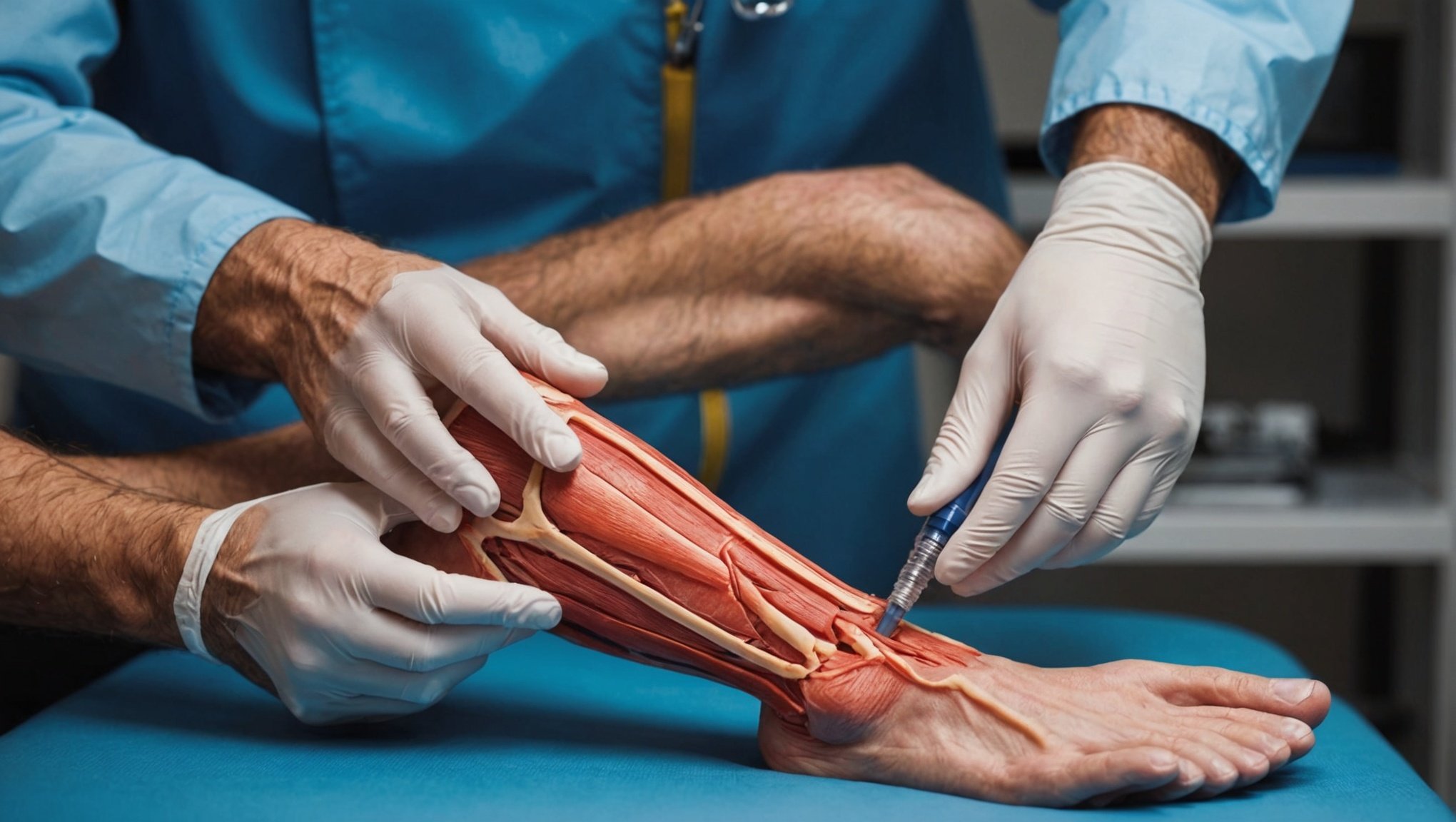You may have heard of platelet-rich plasma (PRP) therapy before, a treatment hailed for its potential in accelerating the healing of injuries. With broad applications in the field of regenerative medicine, PRP therapy has been garnering attention for its role in treating tendon injuries. Chronic tendon injuries, such as tendinopathy, are notoriously difficult to manage. These stubborn conditions often resist traditional treatment methods, causing ongoing pain and disability. This is where PRP therapy steps in, a therapy using components of your own blood to accelerate healing. But just how effective is it? In this article, we will delve into the science behind PRP therapy, the research supporting its efficacy, and its potential implications for treating tendon injuries.
Understanding Platelet-Rich Plasma Therapy
Before we dive into the effectiveness of PRP therapy for tendon injuries, let’s first understand what this treatment method entails. PRP is a concentration of platelet cells taken from your blood, which are rich in growth factors—proteins that can help stimulate healing in the body.
Also to read : What’s New in the Prevention of Peanut Allergies in High-Risk Infants?
During PRP therapy, a sample of your blood is drawn and then spun in a centrifuge to separate the different types of blood cells. The resulting product is a concentration of platelets and plasma. This platelet-rich plasma is then injected back into the body at the site of injury, such as a damaged tendon, to promote healing.
Despite its promising premise, there has been extensive debate among scholars and medical practitioners about the effectiveness of PRP therapy. This is primarily due to the variability in the preparation of PRP and the lack of standardization in clinical studies.
Also to discover : Is There a Correlation Between Social Media Usage and Anxiety Levels in College Students?
Scholarly Evidence Supporting PRP Therapy
PRP therapy has been a hot topic in scholarly circles, with researchers striving to ascertain its efficacy in treating chronic tendon injuries. A quick Google scholar search yields a plethora of studies, some touting its benefits, while others display inconclusive results.
These mixed results can be partially attributed to the diverse range of PRP preparations used across studies. However, a meta-analysis of high-quality, randomized controlled trials published on PubMed Central (PMC) indicated that PRP therapy might be beneficial for patients suffering from chronic tendinopathy.
This notion is further supported by several systematic reviews. A 2019 review published in the American Journal of Sports Medicine showed that PRP injections significantly reduced pain in patients with chronic tendinopathy. Another review in the British Journal of Sports Medicine concluded that PRP therapy was more effective than a placebo in reducing pain and improving function in patients with tendinopathy.
PRP Therapy: Anecdotal Evidence and Patient Testimonials
While scholarly evidence provides a scientific viewpoint, it’s also important to consider anecdotal evidence from those who have undergone PRP therapy. Many patients report significant relief from their chronic tendon pain after receiving PRP treatment.
Although such testimonials can be subjective and biased, they provide valuable insights into the potential benefits of PRP therapy. These accounts often highlight the reduction in pain and improvements in daily functioning following PRP treatment, suggesting that it may indeed play a role in enhancing the quality of life for patients with chronic tendon injuries.
Looking at these testimonials alongside the scholarly evidence, it appears that PRP therapy may indeed offer some benefits for chronic tendon injuries. However, as with any treatment, the effectiveness of PRP therapy can vary depending on individual factors such as the severity of the injury, the patient’s overall health, and the specific preparation of the PRP used.
The Role of Growth Factors in PRP Therapy
A key component of PRP therapy that warrants further discussion is the role of growth factors. PRP is packed with numerous growth factors, including platelet-derived growth factor, transforming growth factor-beta, and vascular endothelial growth factor. These growth factors are believed to facilitate the healing process by promoting cell proliferation, angiogenesis (the formation of new blood vessels), and the synthesis of collagen, a building block of tendons.
This potential to regenerate tissue and promote healing makes PRP therapy particularly appealing for the treatment of chronic tendinopathy, a condition characterized by the degeneration of the tendon’s collagen. By delivering a high concentration of growth factors directly to the site of the injury, PRP therapy aims to kickstart the body’s healing process.
While the role of growth factors in healing is well-documented, more research is needed to fully understand their contribution in the context of PRP therapy. The optimal concentration of growth factors, the timing of their delivery, and their long-term effects are all areas that require further exploration.
PRP Therapy for Tendon Injuries: The Road Ahead
Looking at the current evidence, PRP therapy appears to hold promise in treating chronic tendon injuries. The studies, while varied, indicate potential benefits in terms of pain reduction and functional improvement. Patient testimonials echo these findings, with many reporting enhanced quality of life following treatment.
However, it’s crucial to approach these findings with an element of caution. Despite the promising results, more rigorous, standardized studies are needed to definitively establish the role of PRP therapy in treating tendon injuries. Moreover, PRP therapy should not be viewed as a magic bullet for tendon injuries, but rather as a possible adjunct to a comprehensive treatment approach that includes physiotherapy, medication, and lifestyle modifications.
As research progresses and our understanding of PRP therapy deepens, this innovative treatment method could potentially revolutionize the management of chronic tendon injuries. But for now, it remains a promising – albeit not entirely proven – tool in the arsenal against chronic tendon pain.
The Role of Stem Cells in PRP Therapy
Let’s move our focus to a less explored but potentially significant aspect of PRP therapy – the role of stem cells. Stem cells are unspecialized cells with the ability to differentiate into specialized cell types, thereby contributing to the repair and regeneration of damaged tissues.
In PRP therapy, the PRP injected into the injury site is not only rich in growth factors but also contains a small number of stem cells. The presence of stem cells in PRP is thought to further enhance the regenerative capacity of this therapy. These stem cells, along with the growth factors, could potentially aid in the regeneration of tendon cells, thereby contributing to tendon healing.
Furthermore, research suggests that the combination of PRP and stem cells can lead to superior outcomes compared to using either treatment alone. A study in the Journal of Orthopaedic Research demonstrated that the combined use of PRP and stem cells significantly improved tendon healing in an animal model.
However, a note of caution: the introduction of stem cells into PRP therapy involves a higher level of complexity and uncertainty. The exact contribution of these cells to the healing process, their optimal concentration, and potential risks are still under investigation. As such, further basic science studies are needed to unravel the effects and implications of stem cells in PRP therapy for tendon injuries.
Conclusion: The Current State and Future Directions of PRP Therapy
As we have traversed through the realm of PRP therapy for chronic tendon injuries in this article, it’s evident that the therapy holds promise, but also invites a fair share of skepticism. The rich plasma of PRP treatment, laden with growth factors, potentially carries the power to transform the management of stubborn tendon conditions.
Scholarly evidence from PubMed and Google Scholar, varied as it may be, leans towards the effectiveness of PRP therapy in reducing pain and improving function. Anecdotal accounts from patients further substantiate the benefits of PRP injections. The emerging role of stem cells within PRP therapy adds another layer of therapeutic potential, although the science behind it is still in the nascent stages.
However, it’s pertinent to remember that PRP therapy is not a panacea for all tendon injuries. The effectiveness of the treatment can widely vary depending on the individual’s health status, the severity of the injury, and the specific PRP preparation used. Additionally, a comprehensive treatment plan encompassing physiotherapy, medication, and lifestyle changes remains paramount.
As we look towards the future, it’s clear that further rigorous studies are needed to solidify the place of PRP therapy in the management of chronic tendon injuries. As the body of research around this innovative treatment method grows, so too will our understanding of its efficacy, limitations, and potential applications. With continued exploration, PRP therapy may indeed evolve into a fully validated, potent tool in the fight against chronic tendon pain.











